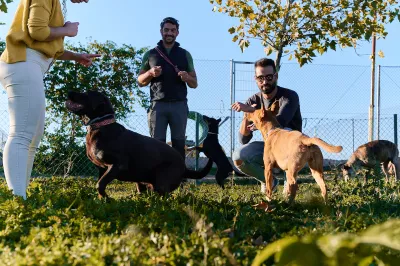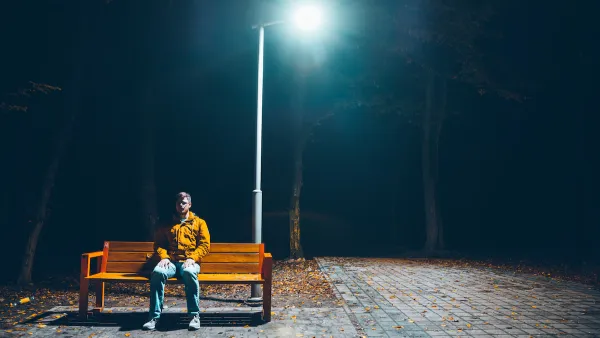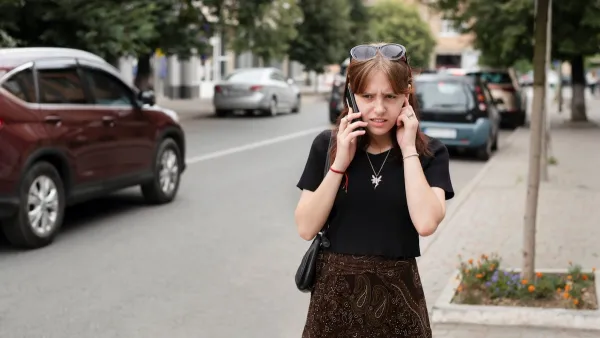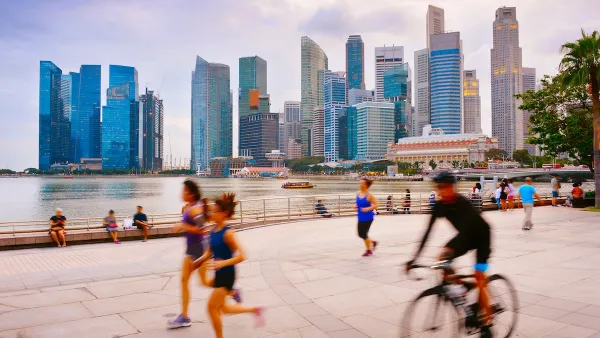While urban design alone can’t mend the tears in our social fabric, planning decisions and thoughtful, inclusive design can offer or hinder opportunities for interaction.

Writing in Bloomberg CityLab, Linda Poon describes a new book by Andy Field titled Encounterism: The Neglected Joys of Being In Person that highlights the importance of interactions with strangers. “The mental health benefits of even the briefest of conversations can add up, according to Field.”
According to surveys, the “loneliness epidemic” is affecting groups differently: younger people and those over the age of 50 are most likely to report feeling lonely and not interacting with many people outside their home, while “People with lower incomes and members of underrepresented racial and ethnic groups are more likely to be lonely.”
Field attributes the rise in loneliness to “a constellation of design decisions that ignore the value of social connections” in favor of convenience—and, during the pandemic, public health—such as self-checkout lanes, mobile ordering, and delivery services, as well as urban patterns that promote car-centric lifestyles and limit access to public space and community life.
The article includes several examples of cities that made concerted efforts to create opportunities for social interaction and build pleasant, safe, accessible public spaces. Poon notes that “Opportunities for psychologically restorative face-to-face interactions aren’t limited to parks and other public spaces. They occur aboard trains and buses during commuting, in supermarket lines and apartment building mailrooms, and other sites of workday congregation.”
Multifamily housing can also offer spaces for residents to mingle—if designed effectively. This is where zoning comes in: eliminating parking requirements, for example, can free up valuable real estate that could be used for common spaces.
Field admits that building community is about more than just “carefully arranged furniture.” Setha Low, author of Why Public Space Matters, says we “need to think more intentionally about creating a “public culture” within these spaces that is welcoming of people of different backgrounds and interests, and that invite both discussion and dissent.”
FULL STORY: City Life Is Too Lonely. Urban Planning Can Help.

National Parks Layoffs Will Cause Communities to Lose Billions
Thousands of essential park workers were laid off this week, just before the busy spring break season.

Retro-silient?: America’s First “Eco-burb,” The Woodlands Turns 50
A master-planned community north of Houston offers lessons on green infrastructure and resilient design, but falls short of its founder’s lofty affordability and walkability goals.

Delivering for America Plan Will Downgrade Mail Service in at Least 49.5 Percent of Zip Codes
Republican and Democrat lawmakers criticize the plan for its disproportionate negative impact on rural communities.

Test News Post 1
This is a summary

Test News Headline 46
Test for the image on the front page.

Balancing Bombs and Butterflies: How the National Guard Protects a Rare Species
The National Guard at Fort Indiantown Gap uses GIS technology and land management strategies to balance military training with conservation efforts, ensuring the survival of the rare eastern regal fritillary butterfly.
Urban Design for Planners 1: Software Tools
This six-course series explores essential urban design concepts using open source software and equips planners with the tools they need to participate fully in the urban design process.
Planning for Universal Design
Learn the tools for implementing Universal Design in planning regulations.
EMC Planning Group, Inc.
Planetizen
Planetizen
Mpact (formerly Rail~Volution)
Great Falls Development Authority, Inc.
HUDs Office of Policy Development and Research
NYU Wagner Graduate School of Public Service





























